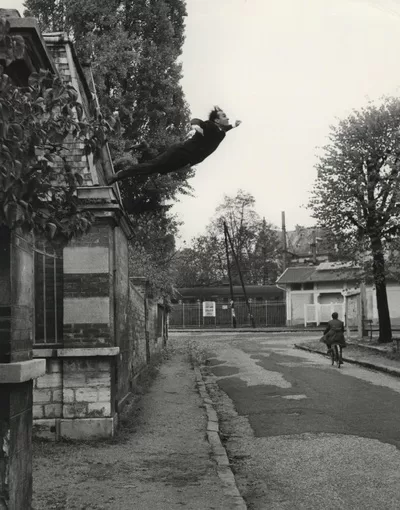Faking It: Manipulated Photography before Photoshop was a photographic exhibition held between 2012 and 2013 at the Metropolitan Museum of Art, Washington’s National Gallery of Art and the Museum of Fine Arts, Houston.
“Following in its tradition of exhibiting and collecting the finest examples of photography, the Gallery is pleased to present some 200 photographs from the 1840s through the 1980s demonstrating the medium’s complicated relationship to truth in representation,” said Earl A. Powell III, director, National Gallery of Art.
Faking it: Manipulated Photography Before Photoshop (Metropolitan Museum of Art) – By Mia Fineman (via Amazon)
See also Man Ray’s love-hate relationship with Hollywood
The Exhibition
This was the first major exhibition devoted to the history of manipulated photography before the digital age. While the widespread use of Adobe® Photoshop® software brought about an increased awareness of the degree to which photographs can be doctored, photographers — including Gustave Le Gray, Edward Steichen, Weegee, and Richard Avedon — have been fabricating, modifying, and otherwise manipulating camera images since the medium was first invented.
This exhibition demonstrated that digitally manipulated images are part of a continuum that extends back to photography’s first decades.
Through visually captivating pictures created in the service of art, politics, news, entertainment, and commerce, Faking It not only traces the medium’s complex and changing relationship to visual truth, but also significantly revises our understanding of photographic history.
Organized thematically, the exhibition began with some of the earliest instances of photographic manipulation — those attempting to compensate for the new medium’s technical limitations. In the 19th century, many photographers hand tinted portraits to make them appear more vivid and lifelike.
Others composed large group portraits by photographing individuals separately in the studio and creating a collage by pasting them onto painted backgrounds depicting outdoor scenes.
Faking It is divided into seven sections, each focusing on a different set of motivations for manipulating the camera image.
“Picture Perfect”
“Picture Perfect” explores 19th-century photographers’ efforts to compensate for the new medium’s technical limitations—specifically, its inability to depict the world the way it looks to the naked eye. To augment photography’s monochrome palette, pigments were applied to portraits to make them more vivid and lifelike.
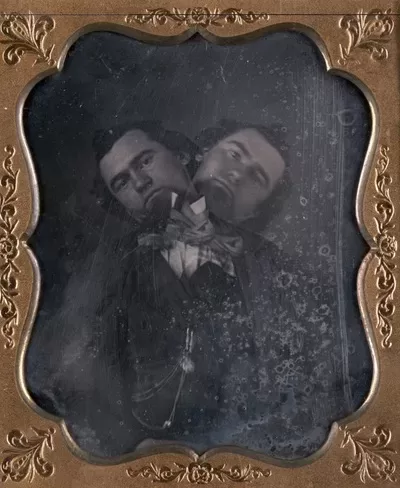

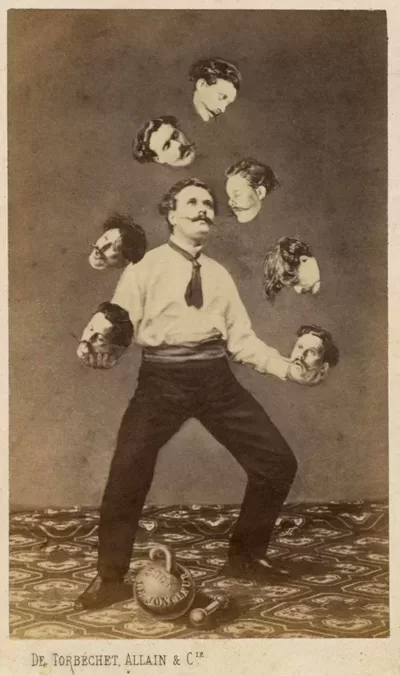

Left: Two-Headed Man, Unknown American artist c. 1855 Daguerreotype
The Nelson-Atkins Museum of Art, Kansas City, Missouri, Gift of Hallmark Cards, Inc.
Right: Man Juggling His Own Head, Unknown artist c. 1880 Albumen silver print from glass negative Collection of Christophe Goeury
For early art photographers, the ultimate creativity lay not in the act of taking a photograph but in the subsequent transformation of the camera image into a hand-crafted picture.
Landscape photographers faced a different obstacle: the uneven sensitivity of early emulsions often resulted in blotchy, overexposed skies.
To overcome this, many photographers, such as Gustave Le Gray and Carleton E. Watkins, created spectacular landscapes by printing two negatives on a single sheet of paper—one exposed for the land, the other for the sky.
This section also explores the challenges involved in the creation of large group portraits, which were often cobbled together from dozens of photographs of individuals.
“Artifice in the Name of Art”
“Artifice in the Name of Art” begins in the 1850s with elaborate combination prints of narrative and allegorical subjects by Oscar Gustave Rejlander and Henry Peach Robinson.
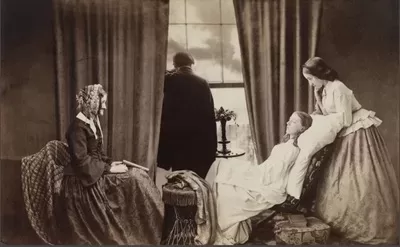

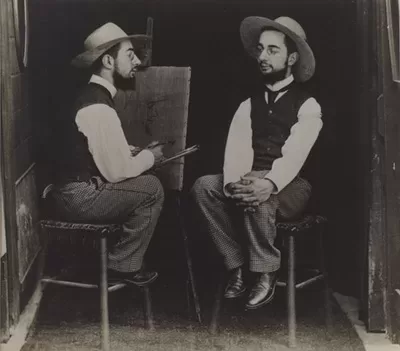

Left: Fading Away 1858 by Henry Peach Robinson (English, 1830-1901), Albumen silver print from glass negatives. The Royal Photographic Society Collection at the National Media Museum, Bradford, United Kingdom
Right: Henri de Toulouse-Lautrec as Artist and Model, by Maurice Guibert (French, 1856-1913), c. 1900, Gelatin silver print, Philadelphia Museum of Art
It continues with the revival of Pictorialism at the dawn of the twentieth century in the work of artist-photographers such as Edward Steichen, Anne W. Brigman, and F. Holland Day.
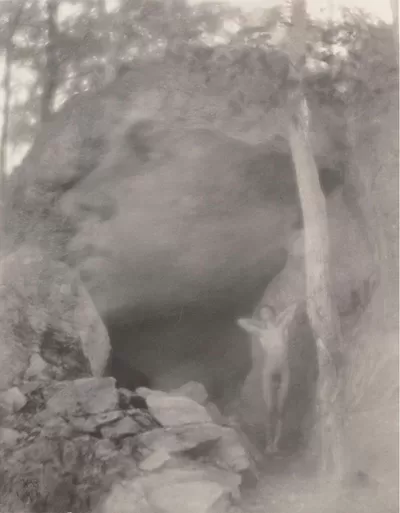

The Vision (Orpheus Scene) (F. Holland Day, 1907). (Image courtesy of the Metropolitan Museum of Art)
“Politics and Persuasion”
“Politics and Persuasion” presents photographs that were manipulated for explicitly political or ideological ends.
It begins with Ernest Eugene Appert’s faked photographs of the 1871 Paris Commune massacres, and continues with images used to foster patriotism, advance racial ideologies, and support or protest totalitarian regimes.
Ernest Eugene Appert were in fact two brothers: Ernest-Charles and Eugène-Léon Appert who worked together as photographers in Paris and are credited with the first photo-montages during the trial of .
Appert, a Parisian portrait photographer, issued “Crimes of the Commune,” a tendentious series of nine photographs of the insurrection that emphasized the criminal brutality of the rebels. Although based on real events, the photographs were utterly fabricated.
Appert hired actors to restage each scene in his studio then cut and pasted the figures onto the appropriate backgrounds; atop the actors’ bodies he pasted headshots of the Commune’s key participants.
Sequences of photographs published in Stalin-era Soviet Russia from which purged Party officials were erased demonstrate the chilling ease with which the historical record could be falsified.
More examples of faked photos from the USSR are here: Faked photos for Soviet propaganda
Also featured are composite portraits of criminals by Francis Galton and original paste-ups of John Heartfield’s anti-Nazi photomontages of the 1930s.
“Novelties and Amusements”
“Novelties and Amusements” brings together a broad variety of amateur and commercial photographs intended to astonish, amuse, and entertain. Here, we find popular images of figures holding their own severed heads or appearing doubled or tripled.
Also included in this light-hearted section are ghostly images by the spirit photographer William Mumler, “tall-tale” postcards produced in Midwestern farming communities in the 1910s, trick photographs by amateurs, and Weegee’s experimental distortions of the 1940s.
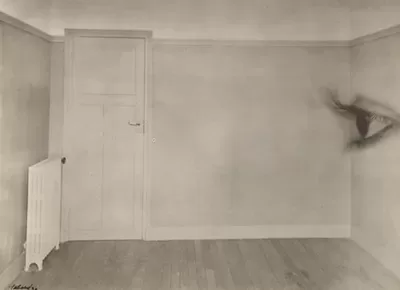

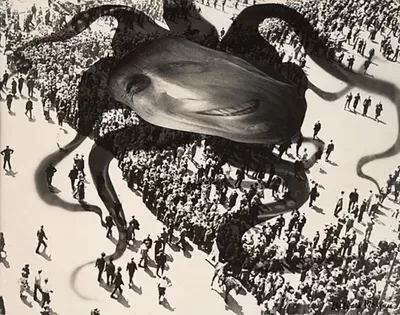

Room with Eye (Maurice Tabard, 1930). (Image courtesy of the Metropolitan Museum of Art)
Hearst Over the People (Barbara Morgan, 1939). (Image courtesy of the Metropolitan Museum of Art)
“Pictures in Print”
“Pictures in Print” reveals the ways in which newspapers, magazines, and advertisers have altered, improved, and sometimes fabricated images in their entirety to depict events that never occurred—such as the docking of a zeppelin on the tip of the Empire State Building.
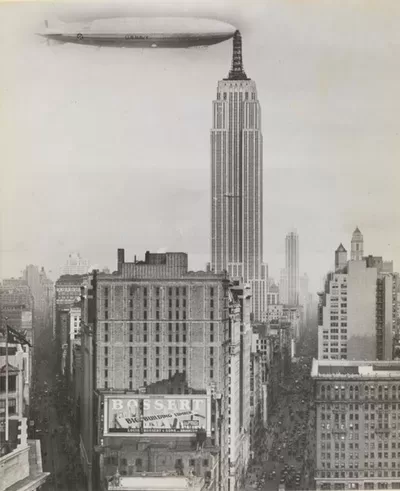

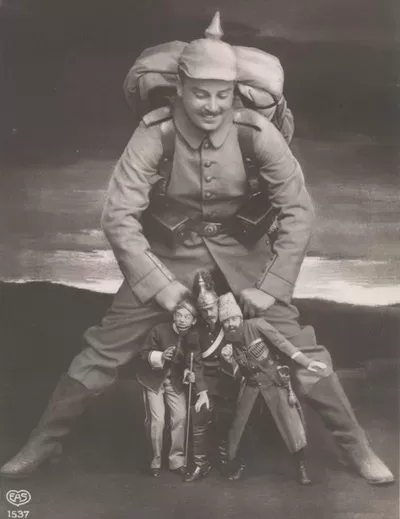

Dirigible Docked on Empire State Building, New York. (Unidentified American artist, 1930). (Image courtesy of the Metropolitan Museum of Art)
A Powerful Collision (Unidentified German artist, 1914). (Image courtesy of the Metropolitan Museum of Art)
These images—artful, subversive, unapologetic in their unreality—serve sometimes to amuse and entertain, sometimes to deliberately deceive, sometimes to comment on social and political issues, and always to give pause with how they tease and taunt our assumptions of optical reality and visual representation.
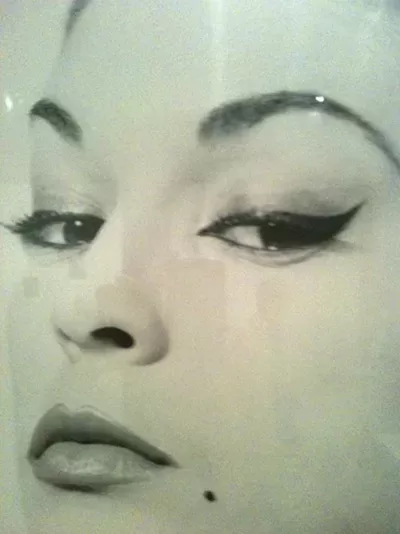

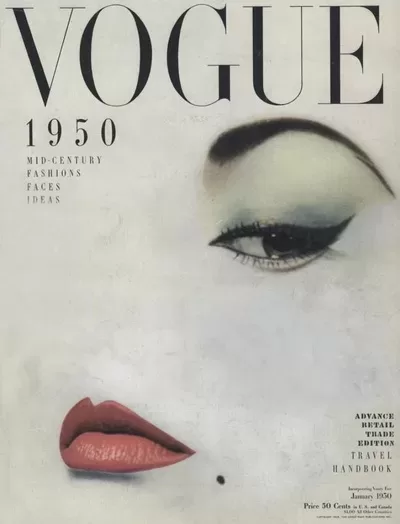

Jean Patchett photographed by Erwin Blumenfeld for Vogue, January 1950.
Erwin Blumenfeld (American born Germany, 1897-1969) “Doe Eye” Vogue cover 1950
Highlights include Erwin Blumenfeld’s famous “Doe Eye” Vogue cover from 1950 and Richard Avedon’s multiple portrait of Audrey Hepburn from 1967.
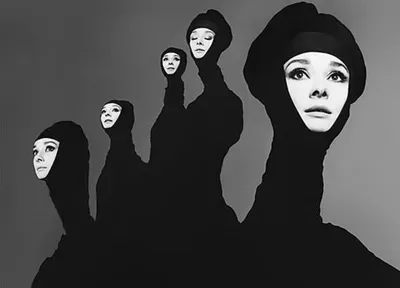

Richard Avedon created this image of the actress Audrey Hepburn for the inaugural issue of Famous Photographers magazine. Avedon constructed a collage of several images made in the studio and printed to scale. He then laid an airbrushed sheet of Mylar over the collage to hide the visible seams. In the magazine story, Avedon said his interest in photocollage grew from “years of looking at contact sheets and being limited by the reality of what was in front of the camera.”
“Mind’s Eye”
“Mind’s Eye” features works from the 1920s through 1940s by such artists as Herbert Bayer, Maurice Tabard, Dora Maar, Clarence John Laughlin, and Grete Stern, who have used photography to evoke subjective states of mind, conjuring dreamlike scenarios and surreal imaginary worlds.
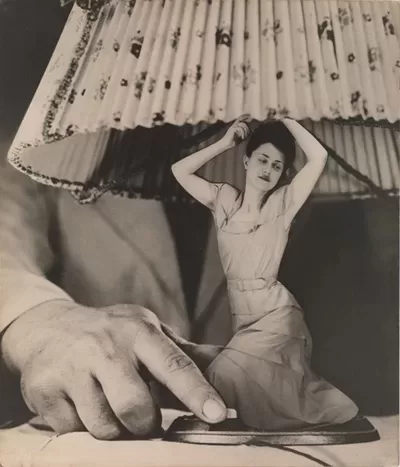

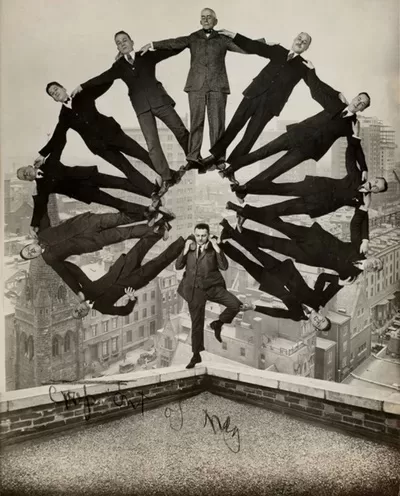

Sueño No. 1: Articulos eléctricos para el hogar / Dream No. 1: Electrical Appliances for the Home (Grete Stern, 1948). (Image courtesy of the Metropolitan Museum of Art)
Man on Rooftop with Eleven Men in Formation on His Shoulders (Unidentified American artist, ca. 1930). (Image courtesy of the Metropolitan Museum of Art)
“Protoshop”
The final section, “Protoshop,” presents photographs from the second half of the 20th century by Yves Klein, John Baldessari, Duane Michals, Jerry Uelsmann, and other artists who have adapted earlier techniques of image manipulation — such as spirit photography or news photo retouching — to create works that self-consciously and often humorously question photography’s presumed objectivity.
As the art and craft of photography grew increasingly sophisticated, photographers devised a staggering array of techniques with which to manipulate their images, including combination printing, photomontage, overpainting, ink and airbrush retouching, sandwiched negatives, multiple exposures, and other darkroom magic.
The exhibition presents a superb selection of manually altered photographs created under the mantle of art, including 19th-century genre scenes composed of multiple negatives, stunning pictorialist landscapes from the turn of the 19th century, and the predigital dreamscapes of surrealist photographers in the 1920s and 1930s.
A section of doctored images made for political or ideological ends includes faked composite photographs of the 1871 Paris Commune massacres, anti-Nazi photomontages by John Heartfield, and falsified images from Stalin-era Soviet Russia.
The show also explores popular uses of photographic manipulation such as spirit photography, tall-tale and fantasy postcards, advertising and fashion spreads, and doctored news images.
The final section features the work of contemporary artists—including Duane Michals, Jerry Uelsmann, and Yves Klein—who have reclaimed earlier techniques of image manipulation to creatively question photography’s presumed objectivity.
By tracing the history of photographic manipulation from the 1840s to the present, Faking It vividly demonstrates that photography is—and always has been—a medium of fabricated truths and artful lies.
While digital photography and image-editing software have brought about an increased awareness of the degree to which camera images can be manipulated, the practice of doctoring photographs has existed since the medium was invented.
Faking It: Manipulated Photography Before Photoshop at The Metropolitan Museum of Art is the first major exhibition devoted to the history of manipulated photography before the digital age.
Featuring some 200 visually captivating photographs created between the 1840s and 1990s in the service of art, politics, news, entertainment, and commerce, the exhibition offers a provocative new perspective on the history of photography as it traces the medium’s complex and changing relationship to visual truth.
The exhibition is made possible by Adobe Systems Incorporated.
The photographs in the exhibition were altered using a variety of techniques, including multiple exposure (taking two or more pictures on a single negative), combination printing (producing a single print from elements of two or more negatives), photomontage, overpainting, and retouching on the negative or print.
In every case, the meaning and content of the camera image was significantly transformed in the process of manipulation.
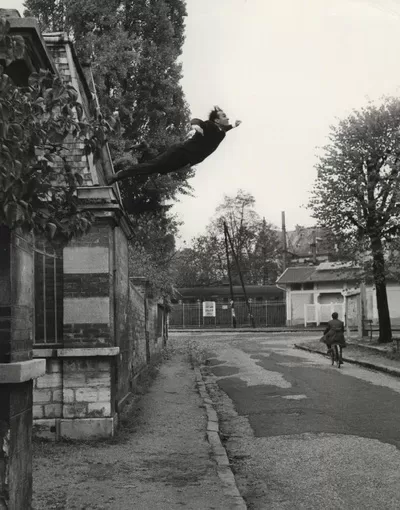

Artistic action by Yves Klein French
Photographed by Harry Shunk German
Photographed by János (Jean) Kender Hungarian
Yves Klein, Harry Shunk, and Jean Kender
Leap into the Void, 1960
gelatin silver print
Lent by The Metropolitan Museum of Art, Purchase, The Horace W. Goldsmith Foundation Gift, through Joyce and Robert Menschel, 1992
© 2012 Artists Rights Society (ARS), New York / ADAGP, Paris; Shunk-Kender © Roy Lichtenstein Foundation; Copy photograph © The Metropolitan Museum of Art
°°°
Exhibition Organization and Support
The exhibition was accompanied by a fully illustrated, 296-page catalogue written by Mia Fineman, published by the Metropolitan Museum of Art, and distributed by Yale University Press. The hardcover is available for purchase from Amazon – Faking it: Manipulated Photography Before Photoshop (Metropolitan Museum of Art) – By Mia Fineman
The exhibition was organized by Mia Fineman, assistant curator of photography at the Metropolitan Museum of Art, and curated by Diane Waggoner, associate curator of photographs, National Gallery of Art. The exhibition was supported by The Exhibition Circle of the National Gallery of Art, and the Trellis Fund. Additional support was provided by the Ryna and Melvin Cohen Family Foundation, Neil and Marcella Cohen, Diane and Howard Zack, and Mark and Theresa Cohen.

